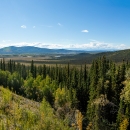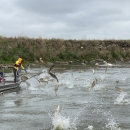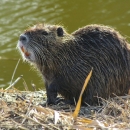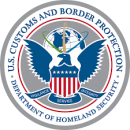Invasive species prevention occurs at critical access points into the U.S., Alaska, and National Wildlife Refuges in Alaska. We're collaborating with federal and state agencies to manage a watercraft inspection station at the U.S.-Canada Border near Northway, Alaska. As watercraft come across the border, staff ask them to stop and answer a series of questions which help screen watercraft for invasive species invasive species
An invasive species is any plant or animal that has spread or been introduced into a new area where they are, or could, cause harm to the environment, economy, or human, animal, or plant health. Their unwelcome presence can destroy ecosystems and cost millions of dollars.
Learn more about invasive species that could be detrimental to Alaska (e.g., quagga and zebra mussels, New Zealand mud snails). Clean watercraft are allowed forwards, but if the watercraft is contaminated then staff implement decontamination procedures such as draining standing water, or washing contaminated equipment using a portable hot water pressure washer. Watercraft inspection staff also collect data on incoming watercraft. The efforts at the border provide a first line of communication to incoming travelers about the threat of invasive species to Alaska's fish, wildlife, lands, and waters.
Invasive species management









